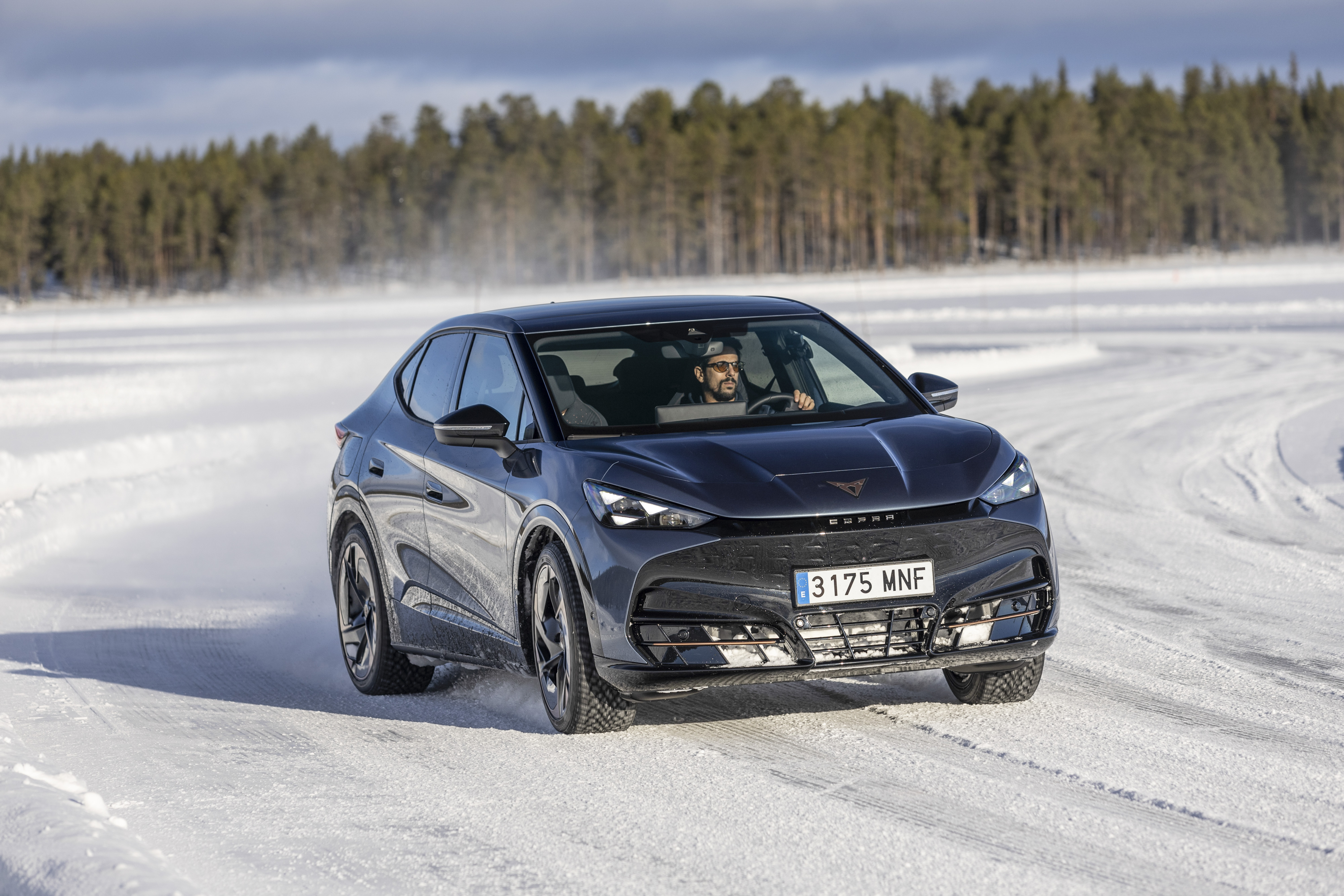- ABT CUPRA Formula E team driver and brand ambassador Lucas di Grassi makes his debut driving on ice with the CUPRA Tavascan
- CUPRA’s 100% electric SUV travels to Lapland for extreme weather testing, with temperatures plunging to -35ºC
- The car completed several tests under the supervision of CUPRA’s engineers and with input from the experienced Brazilian driver
The arctic cold of Swedish Lapland is an essential destination for all new CUPRA models launched on the market to ensure maximum performance through extreme testing. The latest to take to the frozen tracks of Northern Europe was the CUPRA Tavascan, with a world-class driver at the wheel - ABT CUPRA Formula E driver Lucas di Grassi. The CUPRA ambassador experienced first-hand the sensations and emotions delivered by CUPRA’s 100% electric SUV on icy surfaces and snowy tracks in Lapland.
Challenging nature. The cold, wind, snow and ice were the main obstacles to overcome, both for the CUPRA Tavascan and for Di Grassi himself, who relished a completely new challenge: “I’ve driven all over the world for many years, but this is the first time I’ve driven in such extreme icy conditions.” It was a challenge he didn’t hesitate to accept, and it was also his first time at the wheel of the CUPRA Tavascan. His expert involvement was an added bonus for the winter tests, not only because he has competed at the highest level with electric cars, but also because “I used to be a test driver, helping to develop both single-seaters and competition tyres” explains the CUPRA ambassador.

Sub-zero development. The CUPRA Tavascan was exposed to harsh weather in a region where temperatures can drop below -35ºC. Unforgiving conditions that enable CUPRA’s engineers to see how far the brand’s first 100% electric SUV can go. They were assisted by Di Grassi in completing several of the tests, starting with the braking test, where a surface combining ice and asphalt evaluates grip and control. “These conditions give you a good understanding of how the car behaves. By generating front load you can see how much grip you get and how responsive the car is” says Di Grassi. He also put the car through its paces on the acceleration and handling tracks, both on a frozen lake set up for engineers and testers, concluding that “I was impressed by how well the CUPRA Tavascan’s oversteer can be managed. As it’s an all-wheel drive vehicle, you can really apply the power you need to keep control on slippery surfaces.”






A collective impulse. More than 100 CUPRA R&D engineers come through this top-secret facility to complete approximately 1,100 days of testing, from November to March. Among them, CUPRA’s own Vice-President for R&D, Dr. Werner Tietz, who was there in person to oversee the development of the CUPRA Tavascan. “For us it’s important that the car provides enough torque and power to make it fun to drive. That’s why these tests are very useful, among many other things, to fine-tune and adjust aspects such as the stability control (ESC) under low friction conditions.” The car is subjected to hundreds of tests, one of the most demanding of which is the durability test, where the car has to cover 30,000 kilometres, day and night, in order to monitor its behaviour on different surfaces and optimise its performance. It’s a thorough task to gather data and information for the final tuning of the vehicle.





Disruptive driving. With the support of the engineers and even Dr. Tietz, Di Grassi was in excellent company at all times, and he was very satisfied with the experience of driving for the first time on ice and snow, as well as giving his feedback. But what stood out above all was the sensations the electric SUV transmitted on the icy tracks, “the car’s amazing response. I love the CUPRA Tavascan! It’s very precise and controllable, amazing to drive”.



